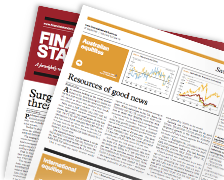Employee or independent contractor?BY MICHAEL CHAAYA, LINDA CHAN, KENDRA TURNER, EDWARD WIGGINS | VOLUME 15, ISSUE 4The High Court, in February 2022, handed down two decisions concerning whether workers were employees or independent contractors: Construction, Forestry, Maritime, Mining and Energy Union v Personnel Contracting Pty Ltd [2022] HCA 1 (Personnel) and ZG Operations Australia Pty Ltd v Jamsek [2022] HCA 2 (Jamsek). In March 2023, the Full Federal Court considered the extended meaning of 'employee' under section 12(3) of the Superannuation Guarantee (Administration) Act 1992 (SGAA), as this issue was remitted by the High Court to the Full Federal Court in relation to the Jamsek decision in Jamsek v ZG Operations Australia Pty Ltd (No 3) [2023] FCAFC 48 (Jamsek No. 3). In May 2023, the Full Federal Court considered whether the right to subcontract or assign, and the right of control, are indicative of an independent contracting relationship in JMC Pty Ltd v Commissioner of Taxation [2023] FCAFC 76 (JMC). These decisions are important as employees are entitled to leave, redundancy pay, and superannuation-among other employee entitlements, while independent contractors are not entitled to these benefits. In deciding Personnel and Jamsek, the High Court applied a new approach to determining whether workers are employees or independent contractors for common law purposes, which emphasised the primacy of the contractual relationship between the parties. This new approach was adopted by the Full Federal Court in deciding JMC. In deciding Jamsek No. 3, the Full Federal Court confirmed the existing ATO guidance on the status of individuals as independent contractors if they perform work for another party in a capacity other than their individual capacity. This paper sets out a revised approach for business to consider when determining whether workers are employees or independent contractors for superannuation law purposes by: • Summarising the key changes to the approach to categorising workers as employees or independent contractors, arising from the High Court and Full Federal Court decisions and the latest draft guidance from the ATO. • Summarising relevant considerations when classifying workers as employees or independent contractors for superannuation law purposes noting the circumstances under which superannuation is not payable, even if a worker is considered an employee. Get articles like this delivered to your email - Sign up for the free weekly newsletter More Articles |
Latest News
UniSuper battles major system outage
Mercer rolls out new corporate super plan
Australian Retirement Trust applies new investment exclusion
Super for housing 'economically reckless': SMC
Cover Story

The super, super fund
CHIEF EXECUTIVE OFFICER
AWARE SUPER




 Read full article
Read full article



















